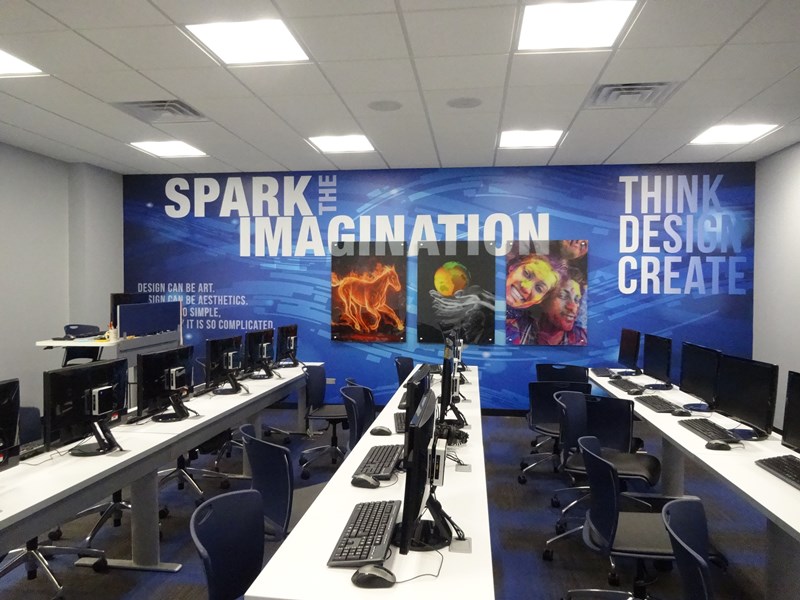DIGITAL DESIGN STUDIO OPENS
Academics

Marist High School’s renovated digital design studio opened officially on Monday for student use. The innovative lab features the latest Adobe design software, modern furniture, an engaging display space, and work stations that allow students to stay up-to-date on the latest technology. Its current use will focus on web design, digital photography, and graphic design with future digital applications in the arts.
This new space is another testament to the school’s approach to dynamically changing the way we teach and learn. “We’re committed to providing challenging curriculum paired with relevant technology and innovative space,” explained Principal Larry Tucker ’79. “Marist promises ‘education for time and eternity,’ and that means using the tools of the time to instill life-long curiosity and problem solving skills.” As a college prep school, Marist seeks to offer hands on experiences to students that can prepare them for higher education and life. The use of digitally-aided design grows each year, and the American Institute of Graphic Artists (AIGA) estimates more than 300,000 graphic designers work in the United States alone, earning a median starting salary of $45,500.
The seating for 28, includes crisp white desks and dark blue rolling chairs. The teacher’s desk and computer connect to two 70-inch monitors at the front of the room for displaying lessons and artwork. A 90-inch piece of Clarus dry erase glass that is both stylish and functional lines the wall. A custom inspiration wall seeks to spark the imagination of designers in the room. “The results of the design lab exceeded my expectations. The design of the space feels like a professional design and photo studio,” said visual arts curriculum coordinator Rita Ator. “The students can sense the significance of the room. It inspires them to explore their ideas, work on projects, and collaborate with each other.”
The move towards new space encourages self-learning, is adaptable and flexible, ignites creativity, and compliments the use of personal mobile technology. More advancement within technology at Marist is planned, both in transforming space and integrating pioneering curriculum changes. The upgrades are made possible thanks to the generosity of donors.
